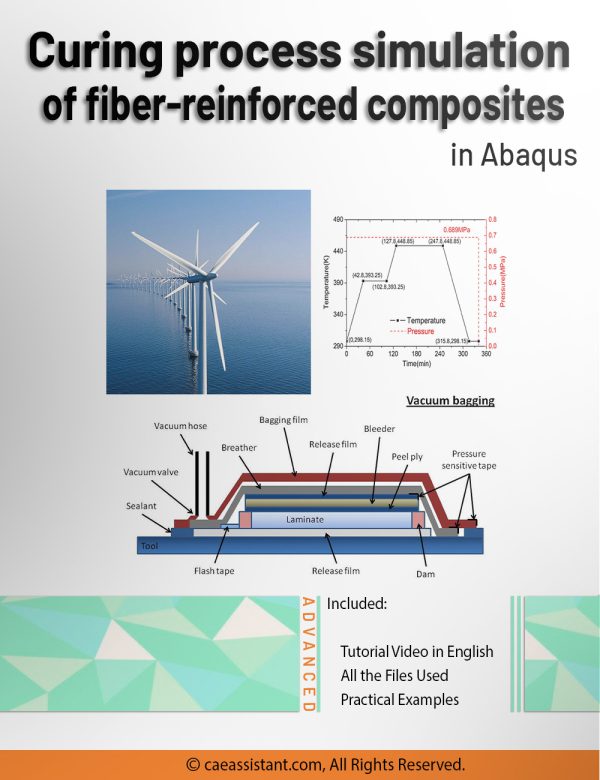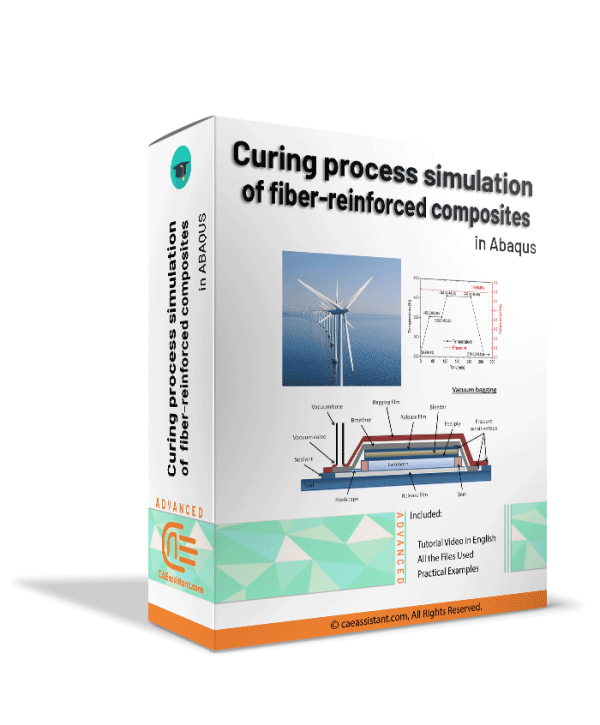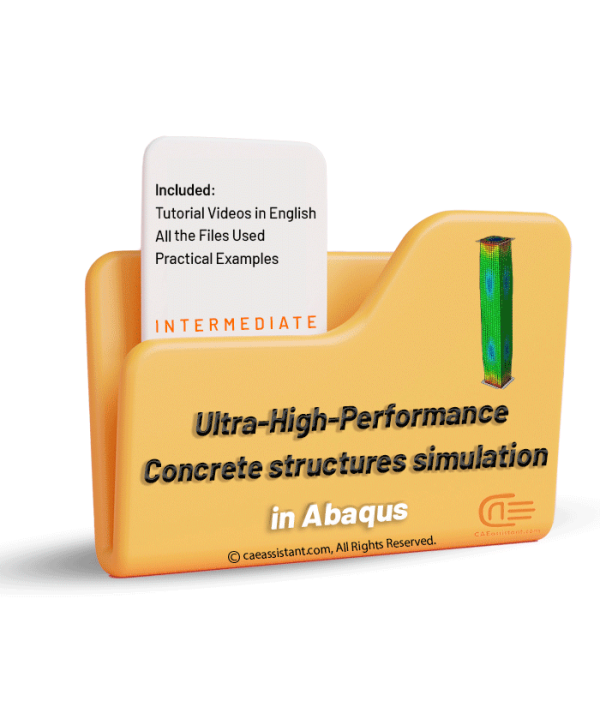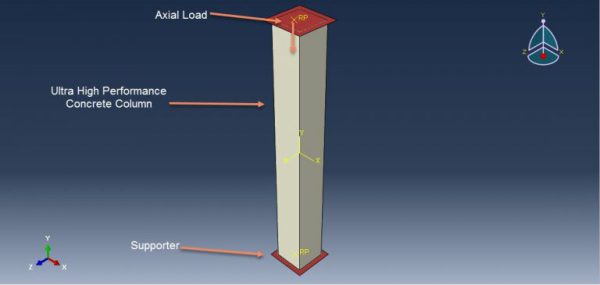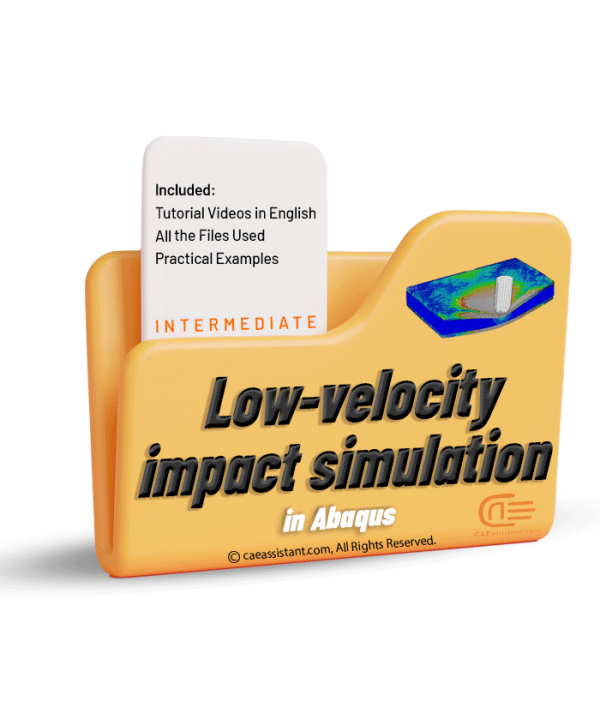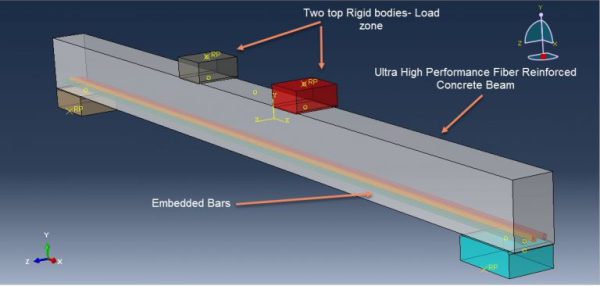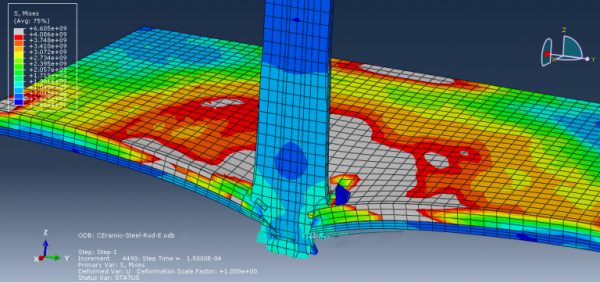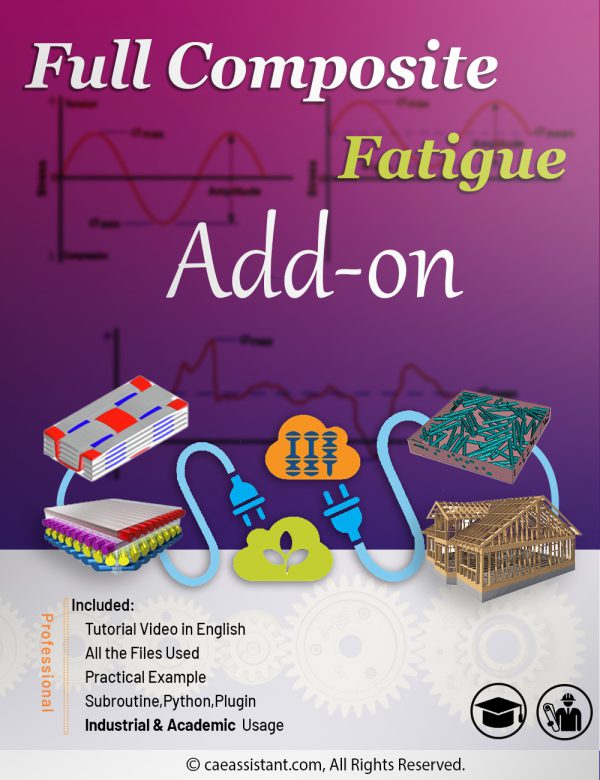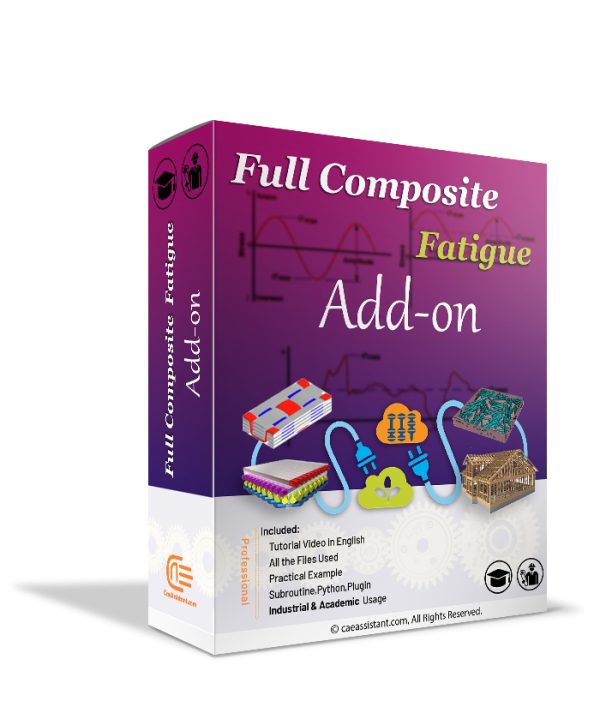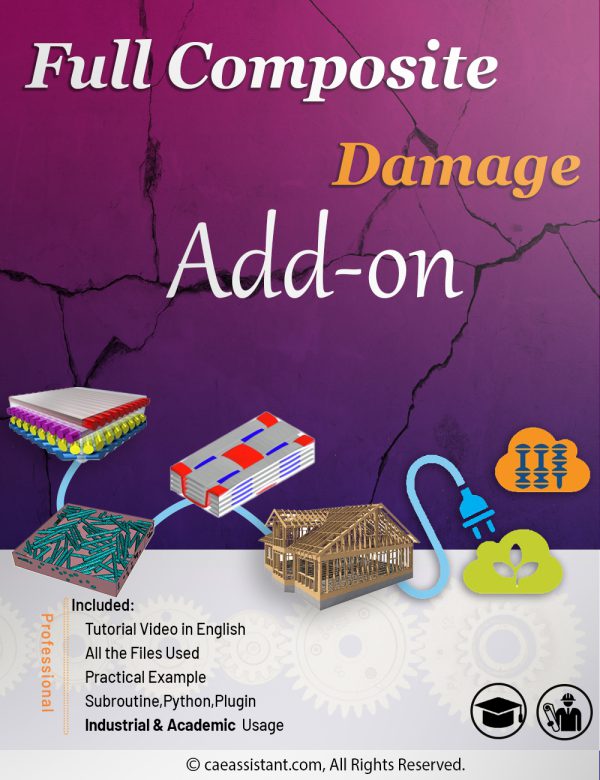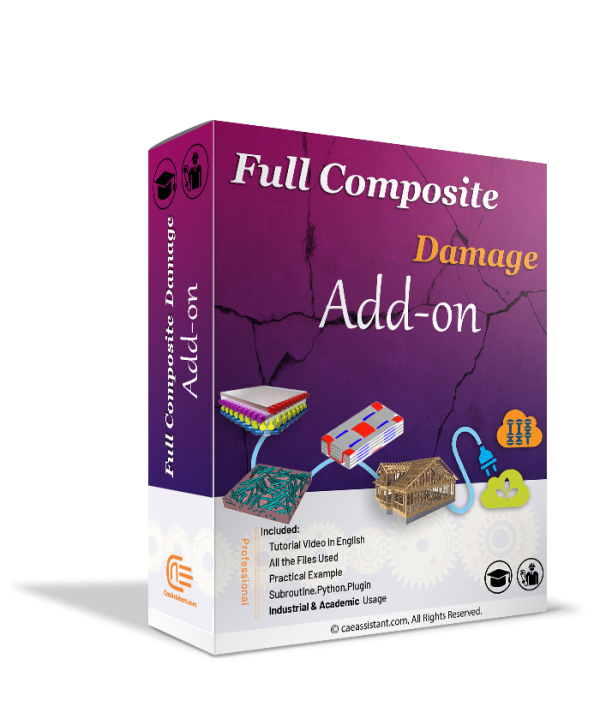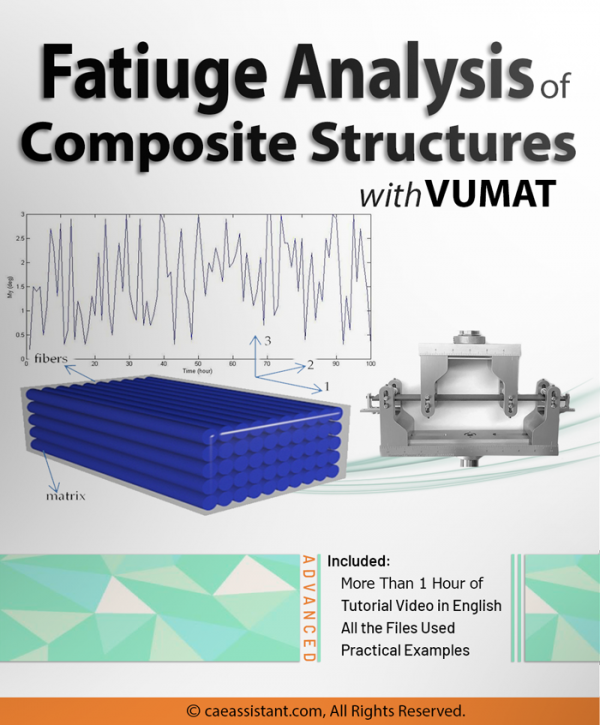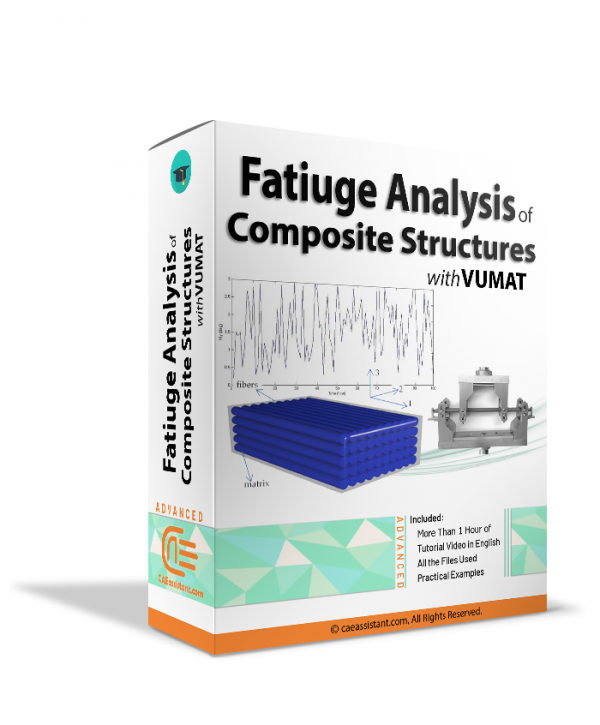Composite
Curing process simulation in Abaqus
Fiber-reinforced composites have found widespread use across various fields due to their remarkable properties. This necessitates a careful design of their manufacturing processes to attain industrial application quality. The critical factor influencing their quality is the curing process, wherein the resin transforms into a solid state under temperature cycles. However, the challenge lies in achieving optimal curing quality while maintaining production efficiency. To overcome this challenge, an effective approach involves utilizing numerical simulations to optimize temperature cycles during curing. Nonetheless, creating such a model is complex as it must consider multiple factors concurrently, including temperature release from chemical reactions, shrinkage strains, and stress resulting from temperature variations, topics covered in this package. The package begins with an introduction to fiber-reinforced composites, exploring their advantages, applications, and categorization. It guides you through the fabrication process, detailing curing techniques and associated challenges. Furthermore, the package introduces constitutive equations for simulating the curing process and the necessary Abaqus subroutines for implementation. Additionally, two practical workshops are included to offer experience in modeling the curing process with Abaqus. These workshops enable you to evaluate internal heat generation and analyze strain and stress distributions. They not only provide guidance on simulation and subroutine implementation but also are provided for verification purposes.
Ultra-High Performance Concrete (UHPC) structures simulation in Abaqus
Ultra-High Performance Concrete structures refer to structures that are constructed using Ultra-High Performance Concrete (UHPC). UHPC is a specialized type of concrete known for its exceptional strength, durability, and resistance to various environmental and loading conditions. UHPC structures can include bridges, high-rise buildings, infrastructure components, architectural elements, and more. Simulating UHPC structures is of significant importance. Through simulation, engineers can analyze and predict the structural behavior and performance of UHPC under different loading conditions. This includes assessing factors such as stress distribution, deformation, and failure mechanisms. By simulating UHPC structures, engineers can optimize the design, evaluate the structural integrity, and ensure the safety and reliability of these complex systems. In this project package, you will learn simulating the UHPC structures with many practical examples.
Low-Velocity Impact simulation in Abaqus
Low-velocity impact refers to the collision between objects at relatively low speeds. While the impact energy may be lower compared to high-speed impacts, low-velocity impacts can still cause significant damage and deformation. Assessing the effects of low-velocity impact is crucial for various industries to ensure the structural integrity, safety, and performance of their products. For example, in the automotive industry, understanding the response of vehicles to low-velocity impacts is essential for designing crashworthy structures and improving occupant safety. In aerospace, assessing the impact resistance of aircraft components, such as fuselage panels or wings, helps ensure their ability to withstand ground handling incidents or bird strikes. In this package, you will learn how to do low-velocity impact simulations with several practical examples.
Ultra-High-Performance Fiber Reinforced Concrete (UHPFRC) structures in Abaqus
Notice: This package will be available one week after purchase.
UHPFRC (Ultra-High-Performance Fiber Reinforced Concrete) structures have emerged as a groundbreaking innovation in construction. These structures offer exceptional strength, durability, and performance, revolutionizing the industry. UHPFRC incorporates a precise combination of Portland cement, fine aggregates, admixtures, and steel or synthetic fibers, resulting in an extraordinarily dense and robust composite material. With compressive strengths exceeding 150 MPa, UHPFRC structures exhibit enhanced resistance to cracking, increased load-bearing capacity, and improved durability against environmental factors such as corrosion and freeze-thaw cycles. The superior mechanical properties of UHPFRC enable the design of slimmer and lighter elements, leading to reduced material consumption and more sustainable construction practices. UHPFRC structures find applications in various fields, including bridges, high-rise buildings, marine structures, and precast elements, offering long-term performance and contributing to the advancement of modern construction. In this package, you will learn how to simulate these structures with many practical examples.
High-Velocity Impact Simulation in Abaqus
High-velocity impact refers to the collision between two bodies at extremely high speeds, typically involving projectiles and targets. It is a phenomenon of great interest in various fields, including defense, aerospace, and automotive industries. High-velocity impact simulation in Abaqus is a computational approach used to analyze and predict the behavior of materials and structures subjected to such impacts. Abaqus, a powerful finite element analysis software, enables engineers and researchers to model and simulate the complex interactions between impacting bodies, accurately predicting factors like stress, strain, deformation, and damage. By simulating high-velocity impacts in Abaqus, engineers can gain valuable insights into the performance and integrity of materials and structures, ultimately aiding in the design of safer and more resilient systems. In this package, you will learn how to do these simulations in many practical examples.
Composite pressure vessel analysis with Semi-Geodesic winding
Nowadays, pressure vessels are produced using various methods, one of which is filament winding. This package teaches the simulation of composite pressure vessels produced using the filament winding method. Filament winding itself has different methods, and one of the most widely used winding methods for producing composite vessels is the semi-geodesic filament winding method. In this package, first, the semi-geodesic method is described. Then, the simulation of a semi-geodesic vessel is performed using a Python script. Additionally, a UMAT subroutine is used to simulate the failure of composite materials used in the vessel.
Full Composite fatigue Add-on (Academic and industrial usage)
This package is designed to instruct users on how to utilize the composite fatigue modeling Add-on, which removes the need to write a subroutine for composite fatigue modeling. Instead, users can select the composite type, input material properties, and generate the subroutine by clicking a button. The Add-on includes four types of composites, and the generated subroutine for all types is the UMAT. These four types are Unidirectional, Woven, short fiber composites (chopped), and wood. The fatigue criteria used for each type are the same as its respective package. For example, the fatigue criteria for woven composites are identical to that used in the "Simulation of woven composite fatigue in Abaqus" package. This Add-on provides a simple graphical user interface for composite fatigue modeling, which can be utilized for both academic and industrial applications.
Pre-Order Now
Coming soon...
Full Composite damage Add-on (Academic and industrial usage)
This package will teach you how to use the composite damage modeling Add-on. The Add-on eliminates the need for writing a subroutine for composite damage modeling. Instead, you only need to select the desired composite type, input the material properties, and click a button. The Add-on will then generate the subroutine for you. The Add-on includes four types of composites: Unidirectional, Woven, short fiber composites (chopped), and wood. The generated subroutine for all types is the VUSDFLD. The damage criteria used in each type is the same as the one used in its respective package. For instance, the damage criteria for the woven composite is identical to the one used in the "Simulation of woven composite damage in the Abaqus" package. This Add-on offers a user-friendly graphical user interface for composite damage modeling, which can be used for academic and industrial purposes.
Pre-Order Now
Coming soon...
Composite Fatigue Simulation with VUMAT Subroutine in ABAQUS
This training package consists of four chapters that help engineers and researchers in the industry to understand the fundamental concepts and necessary tools for simulating composite fatigue using VUMAT subroutine in ABAQUS. The first chapter provides an overview of the fatigue behavior of composite materials, including the factors contributing to fatigue failure. The second chapter explores the failure mechanisms of composite materials and the types of damage that can occur. The third chapter discusses the effects of fatigue on composite materials, including how it affects the material's properties and performance. Finally, the fourth chapter focuses on using the VUMAT subroutine in ABAQUS for composite fatigue analysis, including the material models and criteria used to simulate the behavior of composite materials under various loading conditions. By mastering the concepts and tools presented in this package, engineers can develop more durable and reliable composite structures that can withstand cyclic loading over extended periods of time.
